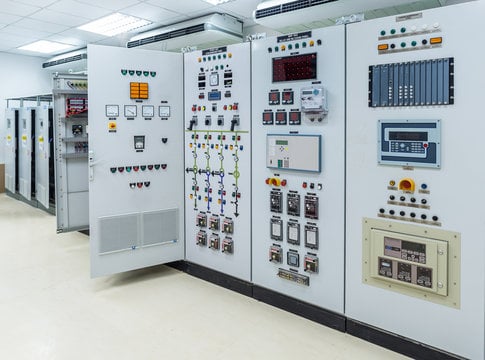When a gas is exposed to a voltage greater than its insulating capabilities, electrical arcs result. The arc starts when the voltage is high enough to ionize the space between the conductors. A gas becomes a great conductor when it is ionized, allowing current to flow and producing the arc-shaped current known as an arc flash. Unintentional electrical discharge that results in a fire is known as an arc fault.
- Arc flashes with high temperatures create blinding brightness and loud noise.
- Hazardous gases are emitted during an arc blast, which is a high-pressure wave that may spew molten metals as well as shrapnel.
- An arc burst causes the emission of toxic gases.
Arc flash hazards might seriously harm electrical infrastructure and business operations. Arc flash hazards can result in a variety of financial losses for businesses, including:
- Added costs for medical treatment, rehabilitation, and worker compensation.
- Costs related to accident investigation and production downtime.
- Legal costs and judgments associated with litigation.
- Penalties, insurance premiums, repair costs, and replacement worker costs.
- A damaging effect on the brand and reputation of the business
- Loss of business opportunities because of a history of accidents, which might result in the cancellation of an electrical license.
Reasons of Electrical Arc Flash:
- Failure of the conductor insulation.
- Living Parts That Are Exposed.
- Human error.
- Poor maintenance of switches and circuit breakers.
- Water around equipment is present.
- Disconnect panel obstructions.
- Cables for high voltage.
- Damaged Tools and Equipment.
- Electrostatic Discharge.
Arc Flash Analysis Methods:
Anytime high-voltage or low-voltage, high-current switching takes place, there is a possibility of an arc flash.
First phase: Ascertain the risk of an arc flash:
- Do an arc flash/fault study or analysis, which should include data collection, software-based power system modeling, short circuit analysis, overcurrent protective device coordination study, arc flash analysis, and arc flash evaluation.
- Assessment of the likelihood that a worker might be exposed to an arc flash
Second phase: Dealing with the danger
- Limiting worker engagement with electrified equipment to prevent worker exposure to arc flash hazards.
- Manual systems should be avoided in favor of automated ones.
- To shield workers from possible risks, place physical barriers between them and powered equipment.
Third phase: Engineering control:
- Decrease fault current to lower incident power.
- Methods for arc flash detection and prevention.
- Remote control devices and automation.
- Modernizing or changing the switchboard.
- Setting up long-term circuit breakers.
- Bus bar insulation.
- Replacing fuses that have blown.
Fourth phase: Administrative controls:
- Marking plants, switch rooms, and other pertinent locations to denote incident energy levels.
- Marking the limits of the arc.
- Capturing arc flash diagrams and data.
- Putting in place safe practices to lessen exposure.
- Using PPE (Personal Protection Equipment) levels and incident energy.
Fifth phase: Personal protective equipment (PPE):
- Personal protective equipment can minimize the severity of an injury but cannot prevent it, despite being the least effective. The type of personal protective equipment (PPE) used depends on how intense the incident is.
For every threat associated with arc flash, CareLabs has a solution. Professionals with the necessary education and expertise can assess the risks posed by arc flash hazards and provide effective mitigation and control measures to safeguard your property and personnel.
Advantages of CareLabs Service:
- Electricity systems that adhere to government standards and regulations and are more secure.
- Electrical systems that are fully integrated save time and money.
- Create a more secure work environment.
- Provide quick solutions in case of an emergency.
- Expand the security margins.
- By automatically generating arc flash labels and work permits, you may save time.
- Avoid possible fines and legal costs.
The collective wisdom and experiences about the risks posed by electric arc flash are the main topics of this recommendation. It explains the hierarchy of controls for arc flash management. It includes de-energizing electrical equipment, IR thermography, racking, and other arc flash management strategies in its list.
To guarantee that our personnel are available nearby in the event of a routine or urgent crisis, CareLabs has crew members stationed in many locations. CareLabs has quickly been recognized as an ISO 9001:2008-accredited company and amassed a clientele with a strong reputation and glowing reviews. Vienna, Graz, Linz, Salzburg, and Innsbruck are just a few of the major cities where CareLabs offers arc flash investigation and analysis services.




